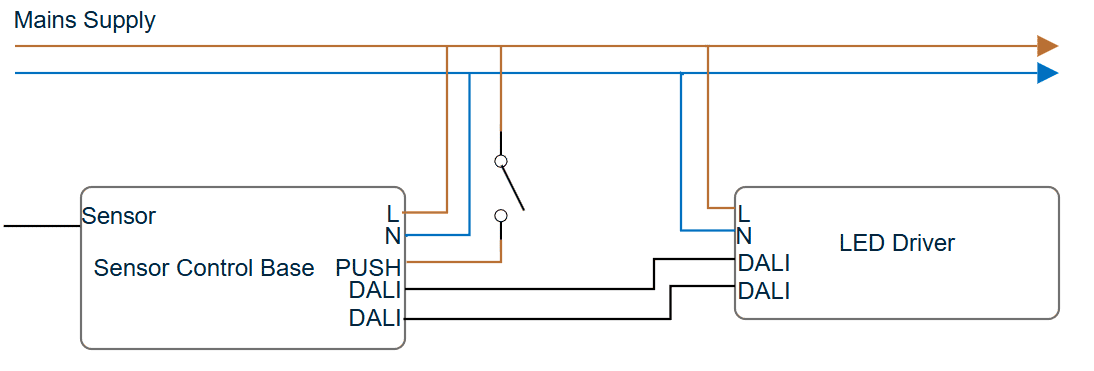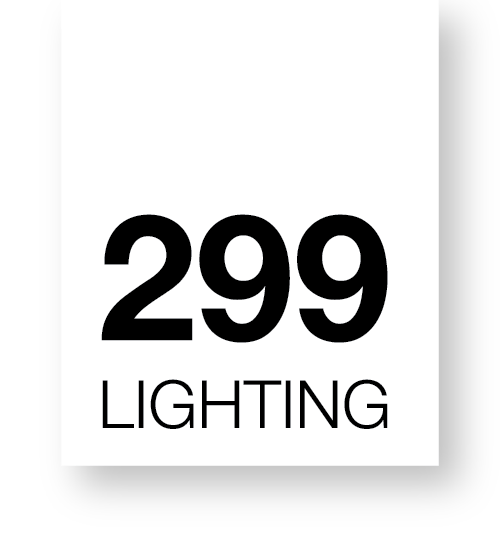Smart Lighting: How PIR, Microwave & Daylight Sensors Help Energy Efficiency

Imagine a space that lights up as you enter and dims when you leave—that’s the power of sensor-driven design. Commercial lighting isn’t just about space illumination anymore. It’s about intelligence, efficiency, and adaptability. At 299 Lighting, we’re committed to bringing you cutting-edge lighting solutions that enhance your spaces while reducing energy costs. A key part of this mission is our knowledge and expertise in integrating light sensors into our luminaires. In this post, we’ll explore the most common types of lighting sensors, how they’re installed, and the practical benefits they deliver.
In a world where sustainability is at the top of everyone's agenda, light sensors are becoming an essential part of modern lighting. When choosing LED lighting sensors, it is good to be aware of what the benefits of each type of sensor are.
- PIR motion sensors can detect motion through heat signatures, making them perfect for spotting occupancy or absence in a room.
- Microwave sensors take it a step further, using radar-like technology to sense movement even through walls or partitions.
- Daylight sensors measure ambient light levels to optimise energy use by dimming or turning off lights when there is enough natural daylight in the space.
Quality matters, especially when it comes to sensors. That’s why we use products from trusted industry leaders like Helvar, Hytronik, and Xitanium.
- Helvar excels in intelligent lighting controls and energy-efficient components
- Hytronik has been a go-to for innovative, energy-saving sensor technology since 2007.
- Xitanium from Philips, brings a reputation for dependable LED drivers and systems.
These brands are known for their reliability and innovation, ensuring that every sensor we integrate into our luminaires performs flawlessly. When you choose 299 Lighting, you’re choosing proven technology from the top names in the business.
 Most of our luminaires are designed with ample room to accommodate lighting sensors. When specifying led lighting with sensors for your project, our lighting engineers will confirm that your chosen luminaire can house a sensor module. When it comes to delivering led lighting sensors on commercial projects, you can either have the sensors integrated in the luminaires by us or you can have the lighting delivered to site with a pre-cut opening, which will allow you to slot the sensor in without a hassle. These light fittings would be also supplied with a blanking plate.
Most of our luminaires are designed with ample room to accommodate lighting sensors. When specifying led lighting with sensors for your project, our lighting engineers will confirm that your chosen luminaire can house a sensor module. When it comes to delivering led lighting sensors on commercial projects, you can either have the sensors integrated in the luminaires by us or you can have the lighting delivered to site with a pre-cut opening, which will allow you to slot the sensor in without a hassle. These light fittings would be also supplied with a blanking plate.
Both approaches are built for simplicity, ensuring a smooth and efficient setup every time.
Flexibility is key, and our sensors offer multiple ways to get them up and running. Use a remote control for quick, wireless adjustments on the fly. For more advanced setups, the DALI interface lets you integrate sensors into a networked lighting system with precise control. Or, if you prefer minimal fuss, opt for self-running modes—just install and let the sensor do its thing. Whatever your project demands, we’ve got a commissioning option to match.
Not sure how it all connects? We provide a simple wiring diagram to guide you through integrating sensors with our luminaires. It’s straightforward enough for electricians and installers to follow, ensuring a smooth setup process. We believe smart technology shouldn’t come with complicated instructions.

Have a specific PIR or microwave sensor that you would like to use? We’re happy to help! We offer custom sensor installation, integrating your supplied sensor into our luminaires. We’ve even worked with Simmtronic sensors on some projects, tapping into their reliable, cutting-edge technology to deliver standout results. Delivering lighting on large-scale commercial projects is a collaborative approach that ensures you get exactly what you need for your project. Just let us know your requirements, and we’ll handle the rest.
When selecting a PIR sensor light or any sensors for that matter, the visual aspect is equally important as the function. We will ensure and match its size to the luminaire’s internals to create a seamless fit. A poor fit or too much interference can throw things off; for instance, a microwave sensor might struggle in some setups, while a PIR sensor would work just fine. We’re here to help you navigate these choices, offering advice and support for even the trickiest projects.

We have been delivering light sensors on commercial projects for a while and delivered numerous large-scale CAT A and CAT B projects including lighting sensors.
PIR sensors excel at occupancy detection, activating lights only when someone’s present, as seen in our largest CAT A fit-out project to date, 3 Sheldon Square, London, where integrated PIR sensors in Rio Suspended luminaires. All fittings are DALI-dimmable with PIR and Simmtronic controls.

Microwave sensors offer broader detection through obstacles, which is ideal for complex layouts needing seamless automation. Daylight harvesting adjusts lighting based on natural light levels, saving energy while maintaining perfect illumination, pair this with PIR efficiency, like in our Michael Faraday House project, where linear lighting with integrated PIR sensors supports a sustainable, tech-forward office.
Sensor integration is about more than just technology, it’s about creating smarter, more efficient spaces tailored to your needs. From energy savings to automated convenience, our PIR, microwave, and daylight sensors deliver results you can see and feel. Ready to explore how they can transform your next project? Get in touch with us today, we’d love to help you out!


